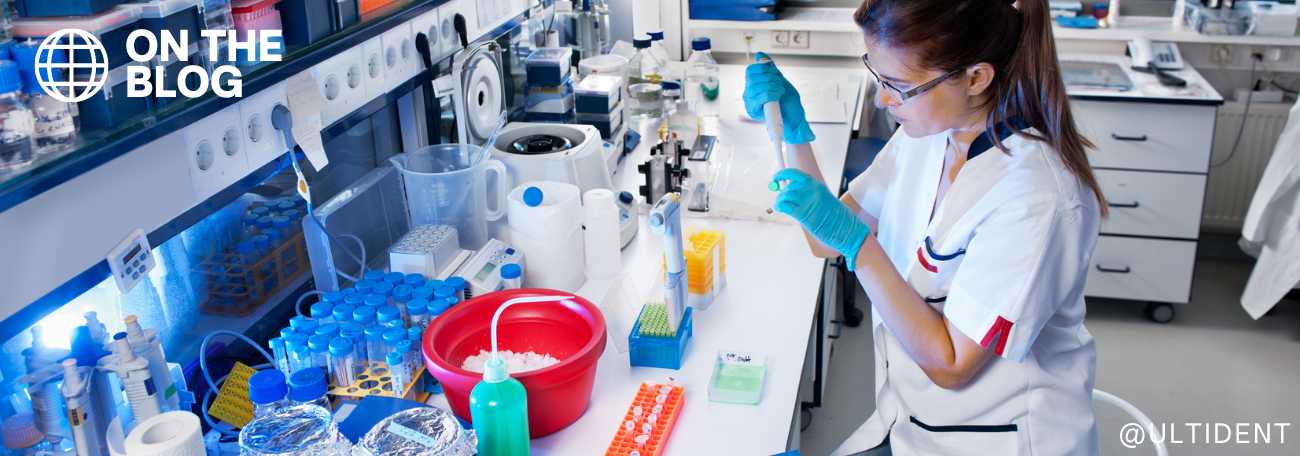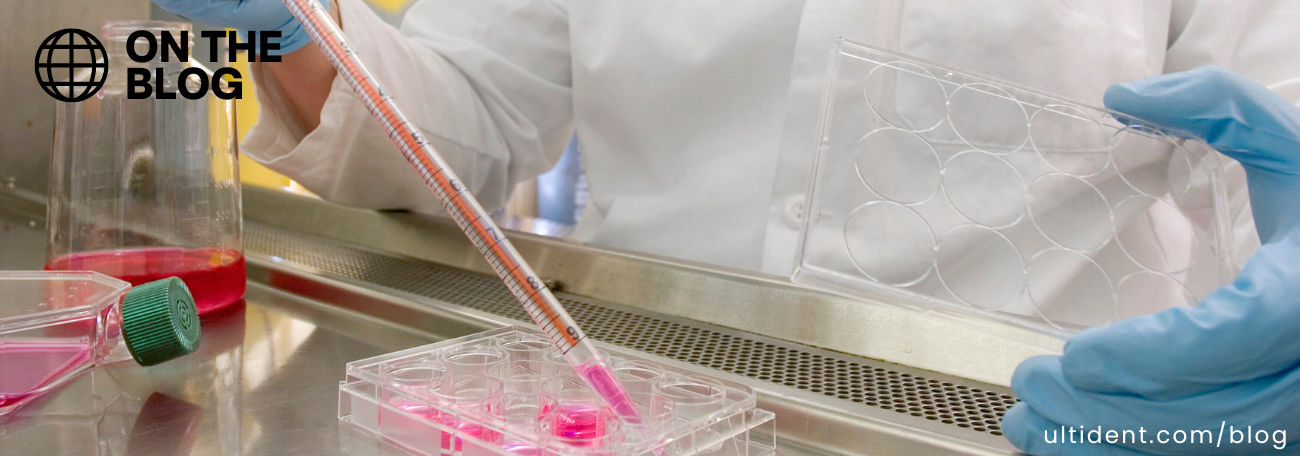On the Blog
-
10 JunRead more »


Laboratory Ergonomics for a Healthy and Safe Workplace
Working in laboratories means we often undergo tasks that require us to be stagnant for long periods of time, sometimes in rather awkward positions. This can unfortunately result in injuries and/or stress disorders that can be persistent. However, having proper laboratory ergonomics readily available is the best way to prevent such injuries from occurring.
What Are Laboratory Ergonomics ?
Laboratory ergonomic principles were designed to minimize the injuries and stress disorders that manifest as a result of repetitive daily tasks or physically demanding tasks. The three most common ergonomic hazards in labs are; objects, environments and systems. These hazards can cause poor posture, unnatural or uncomfortable movements and difficult working conditions. Exposure to such hazards over a long period of time increases the risk of injury.
Common ergonomic risk factors in laboratories include:
-
5 MayRead more »


The Evolution of the Microscope
Imagine what the world would look like today if we could only see what was visible to the naked eye? The existence of cells would still be unknown to us, vaccines and medicines would be significantly less effective, and we would have far less understanding of what makes organisms live and thrive. What I just described is the world without the microscope. Let's take a look at how this revolutionary instrument came to be.
10th Century:
The Romans and Egyptians were the first to experiment and create with glass. They made it using sand, alkali, metal colouring and sodium carbonate, then forming it with seaweed and lime. They would use it to make and sell expensive art with a range of colours, techniques and complex patterns.
13th Century:
In Florence, Italy, a man named Salvino D’Armato Degli Armati discovered that convex glass makes objects appear larger. With that knowledge, he invented the first pair o
-
4 AprRead more »


What Is CRISPR and How Is It Being Used Today?
What is CRISPR?
CRISPR (Clustered Regularly Interspaced Short Palindromic Repeats) is a gene modifying function that can be used to heal genetic defects, stop the spread of diseases, and enhance the growth and quality of crops. CRISPR is different from other gene editing technologies since it can change the DNA of animals, plants, and microorganisms with extremely high precision.
How does CRISPR work?
Essentially, CRISPR works by having an enzyme called Cas9 cut up specific parts of DNA, the Cas9 enzyme acts as molecular scissors that are extremely precise and efficient at targeting specific parts of DNA. Researchers are then able to repair, modify or replace it with new DNA that is healthier, or more efficient at solving the problem at hand. This revolutionized many fields as it enabled researchers to not only tweak, but completely change DNA. With the use of CRISPR, there have been significant breakthroughs
-
4 MarRead more »


Canadian Sustainability Initiatives for a Greener Future
With an abundance of natural resources and spectacular scenery, it's no wonder sustainability is important to Canadians. While we are increasingly embracing sustainability on an individual level, our government has also enacted several measures to protect natural resources for ourselves and future generations. Here are four ongoing sustainability initiatives in Canada that can lead us to a greener future:
Single Use Plastic Ban
Although Canadians are recycling more than ever, only 9% of plastic is being recycled annually. A new approach is therefore needed to ensure the entire life cycle of plastic can be addressed. Canada's ministry of environment and climate change made a proposal to ban the use of certain single use plastics, which will be brought into force by late 2022.
The list includes:
- Checkout bags
- Cutlery
- Food service ware
- Plastic
-
4 FebRead more »


This Psychology Month, Make Mental Health a Priority
When one member of society improves their quality of life, it spreads far beyond just themselves. For this reason, Canada has dedicated the month of February to explain how psychology works to help, and to raise awareness about how to protect and improve your own mental health.
Psychology is the study of the mind and behavior of humans. Psychologists apply their knowledge of how we think, act and feel to understand how biological influences, social pressures and environmental factors affect our mental well-being.
February is Psychology Month. Why Do We Celebrate ?
Psychology month is a campaign dedicated to showing the impact of psychology on society, and to commemorate the effort of Canadian psychologists who work to improve the wellbeing of many.
COVID-19s Impact On Mental Health
This year, in particular,
-
5 JanRead more »


30 Reasons to Choose Ultident Scientific
To celebrate our 30 years in business, we compiled a list of 30 reasons customers like yourself, have made ultident their go-to scientific supplier, year after year. We know the world is full of choices, so thank you for choosing us!
- We are a local, independent organization with entirely local leadership.
- We offer quick and reliable delivery across Canada.
- We have a deep understanding of the Canadian Scientific Market and fully understand our customers’ unique challenges
- Our territory managers are friendly, approachable and always willing to go the extra mile.
- All of our products are top quality. Our extensive network of trustworthy suppliers is audited on a regular basis to ensure they meet the rigorous standards of our quality management system.
- We place customer success at the center of our business practices. Your success is our success.
- We have extensive experience c
-
6 DecRead more »


The Coolest Science and Tech Discoveries of 2021
Despite societal shifts that have impacted nearly every aspect of our lives, scientists have kept discovering, innovating and ensuring the world keeps moving forward. This relentless ingenuity has led us to impressive achievements in life science research, technology, and the convergence of these disciplines.
Here are some of the coolest discoveries you may have missed.
1- Graphene: The Most Valuable Nanomaterial
At one atom thick, Graphene is the thinnest compound known to man. Did we mention it’s also 200 times stronger than steel? Graphene has the ability to change the capacity, and longevity of batteries (by 10 fold!), which will effectively make sustainable technologies such as electric vehicles and solar panels much more viable in the future.
2- Xenobots: Scientists Build the First-Ever Living Robots that can Reproduce
Xenobots, assembled in a petri dish from frog stem c
-
1 NovRead more »


Why Movember Matters: 5 Things Everyone Needs to Know
Each year in November, men around the world grow a mustache to raise awareness for men’s health issues. Despite this being an extremely important cause, many are still unfamiliar with the movement.
Here are five things everyone should know about Movember:
What is Movember?
Movember, founded in 2003, is the leading charity changing the face of men’s health. Participating in Movember usually involves growing a moustache, to raise funds, and increase awareness for various men’s health issues. The movement’s aims to help men live happier, healthier, and longer lives. This global community tackles some of the most prevalent issues that men face, such as: prostate cancer, testicular cancer, and mental health.
If You Are a Man, You Should be Self-examining.
What a lot of people don’t know is that testicular cancer is the #1 cancer among young men. Yet most men at risk don’t kno
-
1 OctRead more »


4 Reasons Life Science Labs are still Experiencing Supply Shortages
As the COVID pandemic continues to twist and turn, life science labs are still experiencing supply shortages. We break down the main reasons why so many life science labs are still struggling to source consumables 18 months into the pandemic.1- Increased Demand for COVID Testing
Supplies Microplates, transfer pipettes, filter tips, gloves, and other equipment typically needed for life science labs are also needed for hospitals, testing centers, and vaccine administration sites. The pandemic’s sudden arrival made it difficult for consumable suppliers to grapple with an unprecedented demand for a historically stable product.
2- Decreased Supply of Plastic and Polypropylene
This first point relates to another step back on the supply chain as plastic/polypropylene needed to make a variety of research equipment such as cell culture dishes, pipettes, centrifuge tubes, etc., a
-
2 AugRead more »


How to Select the Right Nitrile Glove for your Application
With so many varieties of Nitrile Gloves on the market it can be hard to know which one to pick. We spoke with our glove experts and came up with some considerations to help you make the right decision.
For the purpose of this article, we’re going to focus on single-use, disposable, medical-grade nitrile gloves most commonly found in hospitals, medical facilities, dental facilities and laboratories.
All medical-grade gloves are Health Canada licensed as Class 2 Medical Devices, ensuring they have undergone rigorous testing to provide the strength and durability needed for your specific application. Health Canada guidelines also state that medical-grade gloves must be clearly identified as such by using specific words, (like “health care”, “examination”, “medical”) symbols or images that signify medical use. While non-medical gloves may be less costly, they are also less protective.
Glov





